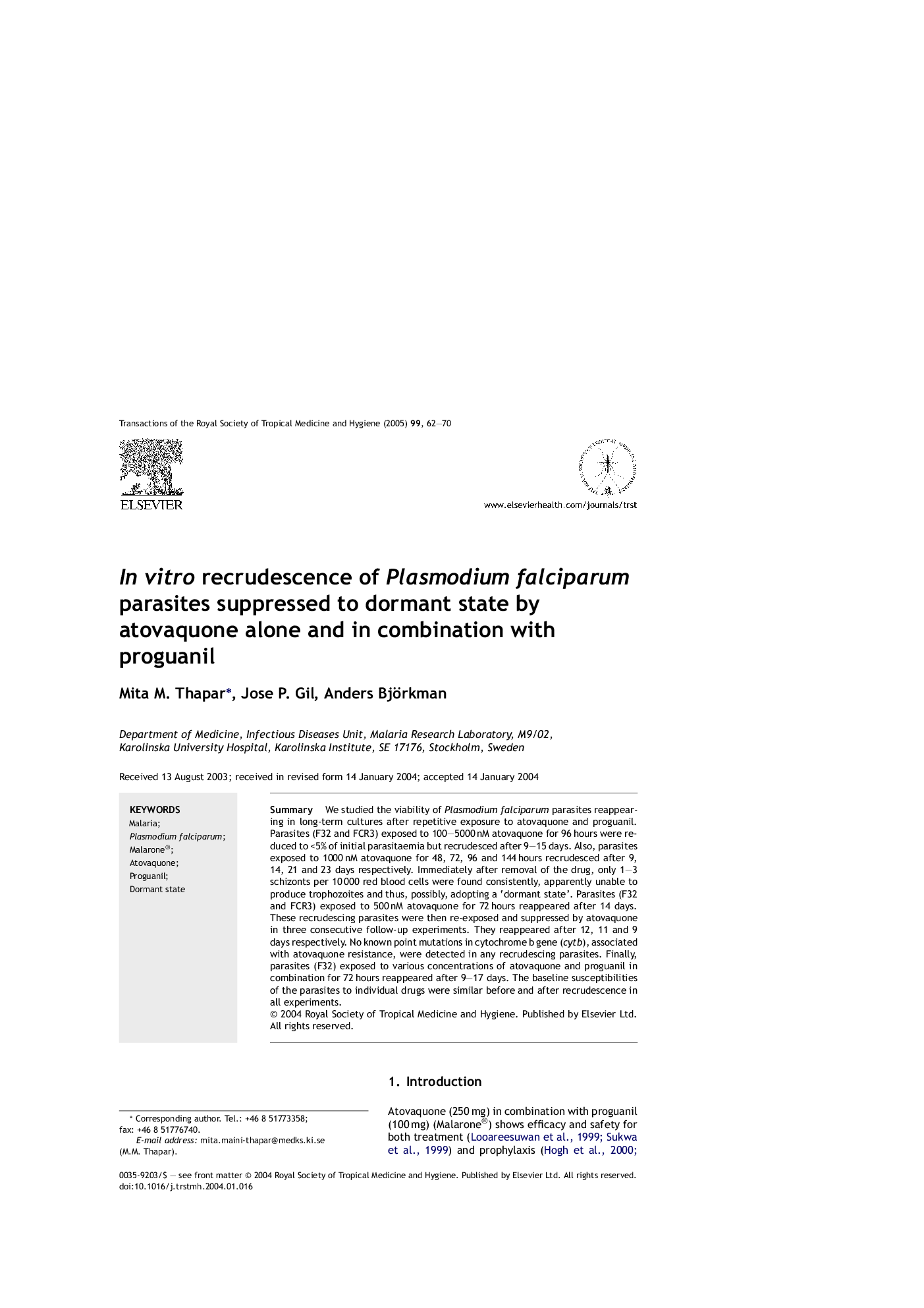| Article ID | Journal | Published Year | Pages | File Type |
|---|---|---|---|---|
| 10030672 | Transactions of the Royal Society of Tropical Medicine and Hygiene | 2005 | 9 Pages |
Abstract
We studied the viability of Plasmodium falciparum parasites reappearing in long-term cultures after repetitive exposure to atovaquone and proguanil. Parasites (F32 and FCR3) exposed to 100-5000Â nM atovaquone for 96Â hours were reduced to <5% of initial parasitaemia but recrudesced after 9-15 days. Also, parasites exposed to 1000Â nM atovaquone for 48, 72, 96 and 144Â hours recrudesced after 9, 14, 21 and 23 days respectively. Immediately after removal of the drug, only 1-3 schizonts per 10Â 000 red blood cells were found consistently, apparently unable to produce trophozoites and thus, possibly, adopting a 'dormant state'. Parasites (F32 and FCR3) exposed to 500Â nM atovaquone for 72Â hours reappeared after 14 days. These recrudescing parasites were then re-exposed and suppressed by atovaquone in three consecutive follow-up experiments. They reappeared after 12, 11 and 9 days respectively. No known point mutations in cytochrome b gene (cytb), associated with atovaquone resistance, were detected in any recrudescing parasites. Finally, parasites (F32) exposed to various concentrations of atovaquone and proguanil in combination for 72Â hours reappeared after 9-17 days. The baseline susceptibilities of the parasites to individual drugs were similar before and after recrudescence in all experiments.
Related Topics
Life Sciences
Immunology and Microbiology
Applied Microbiology and Biotechnology
Authors
Mita M. Thapar, Jose P. Gil, Anders Björkman,
